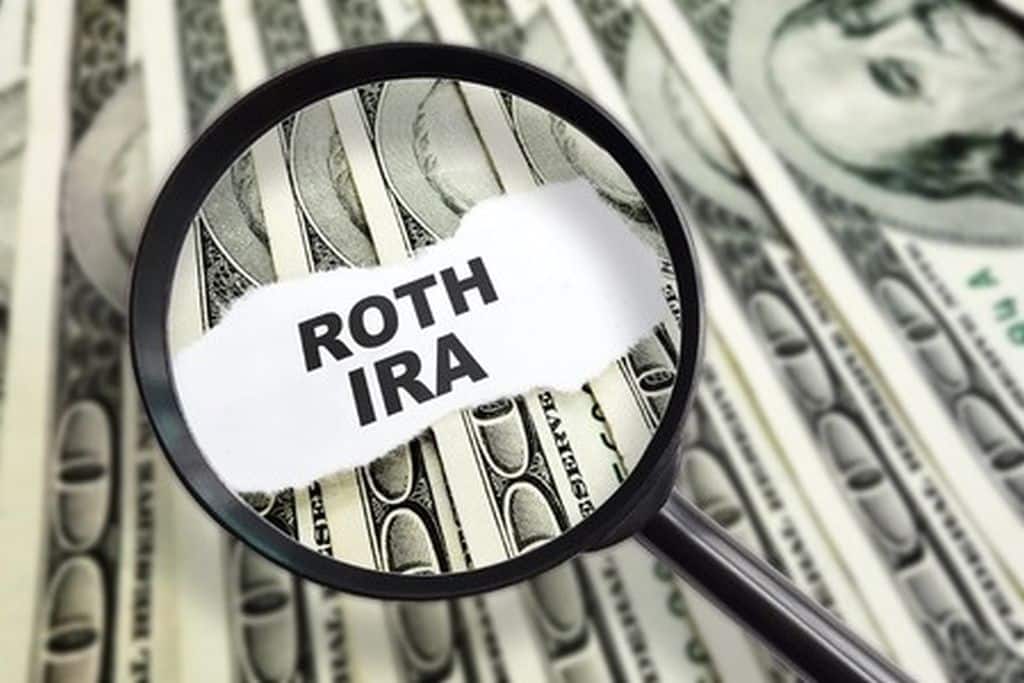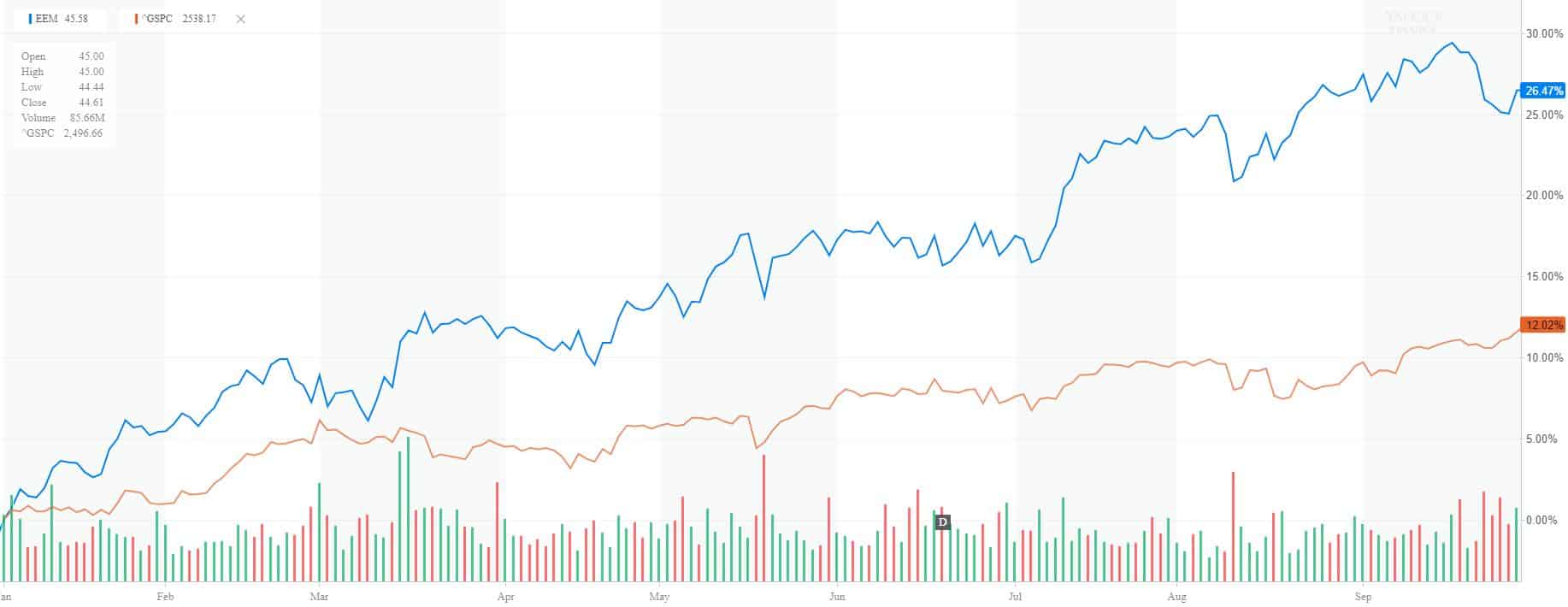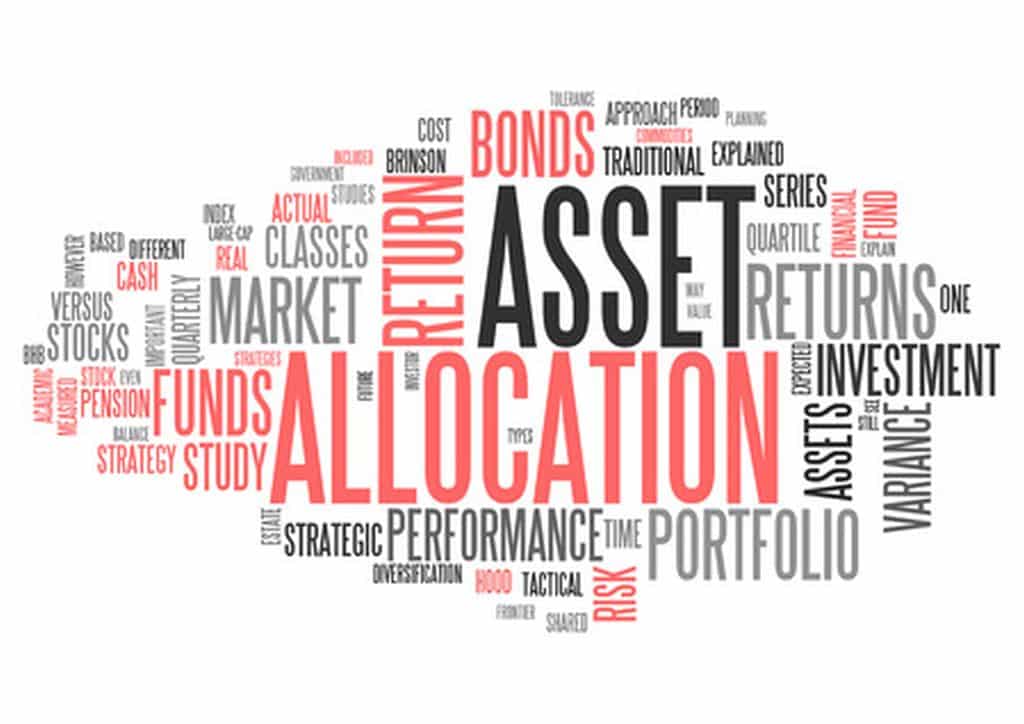On August 31, 2016, S&P 500 will introduce a new sector – Real Estate. Up until now real estate companies, also known as REITs, belonged to the Financial sector. They were in the company of large financial and insurance corporations. The new category will have 27 stocks, $567 billion of market capitalization and an approximate weight of 3% of the total S&P 500 market value.
With the addition of Real Estate as a separate sector in S&P indices, many active managers will have to aline their current portfolios with the new sector structure.
What is a REIT?
A real estate investment trust (REIT) is a company that owns and manages income-producing real estate. It represents a pool of properties and mortgages bundled together and offered as a security in the form of unit investment trusts.
REITs invest in all the main property types with approximately two-thirds of the properties in offices, apartments, shopping centers, regional malls, and industrial facilities. The remaining one-third is divided among hotels, self-storage facilities, health-care properties, prisons, theaters, golf courses and timber.
The total market capitalization of all publicly-traded REITs is equal to $993 billion. The majority of it, $933 billion belongs to Equity REITs and the remainder to Mortgage and other financing REITs.
There are 219 REITs in the FTSE NAREIT All REITs Index. 193 of them trade on the New York Stock Exchange
Legal Status
REITs are subject to several regulations. To qualify as a REIT, a real estate firm must pay out 90% of its taxable income to shareholders as dividends. The REIT can deduct the dividends paid to shareholders from its taxable income. Thus their income is exempt from corporate-level taxation and passes directly to investors. Other important regulations include:
- Asset requirements: at least 75% of assets must be real estate, cash, and government securities.
- Income requirements: at least 75% of gross income must come from rents, interest from mortgages, or other real estate investments.
- Stock ownership requirements: shares in the REIT must be held by a minimum of 100 shareholders. Five or fewer individuals cannot (directly or indirectly) own more than 50% of the value of the REIT’s stock during the last half of the REIT’s taxable year.
Distributions
Dividend distributions for tax purposes are allocated to ordinary income, capital gains, and return on capital, each of them having different tax treatment. REITs must provide shareholders with guidance on how to treat their dividends for tax purposes. The average distribution breakdown for 2015 was approximately 66% ordinary income, 12% return on capital, and 22% capital gains.
REITs distributions have grown substantially in the past 15 years. The total REIT distributions in 2000 were under $8 billion dollar. Just between 2012 and 2015, REITs distribution rose up from $28.8 billion to $44.9 billion, or 44%.
Tax implicationsThe majority of REIT dividends are considered non-qualified dividends and taxed as ordinary income, up to the maximum rate of 39.6 percent, plus a separate 3.8 percent Medicare surtax on investment income.
Capital gains distributions are taxable at either 0, 15 or 20 percent tax rate, plus the 3.8 percent surtax.
Return-on-capital distributions are tax-deferred. They reduce the cost basis of the REIT investment.
When a REIT distributes dividends received from a taxable REIT subsidiary or other corporation, those distributions are taxed at the qualified dividend rate of 0, 15, or 20 percent, plus the 3.8 percent surtax.
Timber REITs
One REIT sector makes an exception from the above rule. Timber REITs have a favorable tax treatment from the IRS. Distributions from timber REITs such as RYN, PCL, PCN & WY are considered long-term capital gains and therefore are taxable at the lower capital gain rate (0, 15% or 20% plus 3.8% Medicare surcharge).
Economic Cycle
Individual REIT sectors have different sensitivity to cyclical factors. Industrial, hotel, and retail REITs have the biggest exposure to economics cycles. Their occupancy and rental rates are extremely sensitive to economic conditions. Cyclical downturns in the economy, recession, and weak consumer spending, can significantly hurt the revenue stream of these REITs.
On the other hand, health care REITs tend to have long-term rental agreements and are more sheltered from market volatility.
Interest Rates
Since many REITs use bank loans and other external financings to expand their business, they have benefitted significantly from the current low-interest-rate environment. Furthermore, many yield-seeking investors turned to REITs for higher income. If low-interest rates remain, REITs will likely expand their base to a broader range of market participants.
Interest rates can impact REIT’s performance differently depending on two main factors – debt and lease duration.
Loan maturities
As a result of the current low rates, many REITs have increased their leverage and therefore have high sensitivity to interest changes. If interest rates rise, REITs with near-term loan maturities will need to refinance at higher rates. Thus their interest payments will go up, which will lead to less cash available for dividends. Therefore, REITs with higher levels of debt and short-term maturities will perform worse than REITs with less debt and long-dated maturity schedules.
At the same time, REITs with lower debt levels relative to their cash flows, all else equal, will perform better in a rising-rate environment.
Lease duration
While higher interest rates would affect all REITs, industry subsectors would be affected differently, depending on lease durations. REITs with shorter lease durations will perform relatively better in a rising-rate environment because they can seek higher rents from tenants as rates rise than could REITs with longer lease durations. The higher rents can offset the negative impact of higher interest expense. Hotel REITs usually have the shortest lease durations, followed by multifamily properties and self-storage.
Healthcare, office, and retail REITs usually sign long-term leases. Therefore rising interest rates will potentially hurt these REITs due to their inability to adjust rental contracts to offset rising costs.
Risk and return
Real Estate Investment Trusts historically have been more volatile than S&P 500. The 40-year standard deviation of the REIT’s sector is 17.16% versus 16.62% for the S&P 500 and 10.07% for the 10-year Treasury. During this 40-year period, REITs achieved a 13.66% cumulative annual return versus 11.66% for S&P 500 and 7.39% for the 10-year Treasury. (www.portfoliovisualizer.com)
Furthermore, the 10-year (2006-15) standard deviation of the REIT sector is 22.01% versus 18.02% for the S&P 500 and 9.54% for 10-year Treasury. For the same period, REITs reported 7.83% cumulative annual return versus 6.96% for S&P 500 and 4.57% for 10-year Treasury. (www.portfoliovisualizer.com)
Among the best five-year REIT sector performers were Retail, Self-Storage, and Industrial. For the same period, worst performers were Mortgage, Hotel and Office RETS.
Valuations
With respect to pricing, REITs are reaching high valuations levels. The current Price to Fund to Operations ratio is hovering around 18, which is slightly above the historical average of 16. While the P/FFO ratio remain reasonable compared to historical figures, further price rally in REITs not supported by the increase in cash flows may impose a significant risk for sector overheating.
Diversification
Even though REITs are publicly traded companies, very often they are considered an alternative asset due to their weak relationship with the other asset classes – equities and fixed income. US REITs have a relatively low correlation with the broader stock market. The 40-year correlation is equal to 0.51, while the 10-year correlation is 0.73. The correlation between REITs and 10-year Treasury is equal to -0.06, while that with Gold is 0.09.
This low correlation with other asset classes makes the REITs a solid candidate for a broadly diversified investment portfolio.
Investing Strategies
Directly
There are 219 publicly-traded REITs. 27 of them are included in the S&P 500 index. If you decide to invest in a single REIT or basket of REITs, you need to consider company-specific risk, management, sub-sector, regional or national market exposure, leverage, lease duration, history, and distribution payments.
Real Estate ETFs
VNQ
VNQ dominates the REITs ETF space as the largest and second-cheapest ETF. It includes a broad basket of 150 securities. The ETF tracks the MSCI US REIT Index, which includes all domestic REITs from the MSCI US Investable Market 2500 Index. This ETF doesn’t include any mortgage, timber, and tower REITs. It has an expense ratio of 0.12% (second lowest to SCHH). It has $32.4 billion of assets under management and Morningstar rating of 4. The fund holds a diversified portfolio across all property sectors. Retail REITs are the largest holding, at 25% of assets, Specialized REITs make up 16.50%, office, 12.6% residential, 15.7%, healthcare, 12.3%, diversified, 8%, hotel and resort, 5.3%, and industrial, 4.7% REITs.
IYR
IYR tracks the Dow Jones U.S. Real Estate Index. It is the most diversified REIT ETF. Unlike other ETFs which hold only equity REITs, IYR holds mortgage, timber, prison and tower REITs including companies like American Tower, Weyerhaeuser Co, Annaly Capital Management NLY and Crown Castle International Corp. IYR has three stars by Morningstar and has an expense ratio of 0.45%. IYR’s holdings are broken by Specialized REITs, (27.09%), Retail, 19.74%, Residential, 12.70%, Office, 10.00%, Health Care, 9.88%, Mortgage REITs, 4.90%, Industrial, 4.56%, Diversified, 4.51%, Hotel & Resort, 3.56%, Real Estate Services, 2.06%
ICF
ICF tracks an index of the 30 largest publicly traded REITs excluding mortgage and tower REITs. The design of this index capitalizes on the relative strength of the largest real estate firms and the conviction for consolidation in the real estate market. The ETF includes Retail REITs, 24.84%, Specialized REITs, 18.71%, Residential, 18.08%, Office, 15.23%, Health Care, 14.41%, Industrial, 5.79%, Hotel & Resort REITs, 2.56%.
RWR / SCHH
RWR / SCHH are the smallest of the five funds. They track Dow Jones US Select REIT Index. The index tracks US REITs with a minimum market cap of $200 million. The index also excludes mortgage REITs, timber REITs, net-lease REITs, real estate finance companies, mortgage brokers and bankers, commercial and residential real estate brokers and real estate agents, homebuilders, hybrid REITs, and large landowners of unimproved land. The funds’ portfolio holds a diversified range of REITs across property sectors similar to other ETFs.
SCHH has the lowest expense ratio of 0.07% all REITs ETFs while RWR has an expense ratio of 0.25%.
Performance
Comparing the performance of the top ETFs in the past ten years, we can see a clear winner. VNQ is leading by price return, total return, and Sharpe Ratio. Next in line are RWR and ICF. IYR takes the last spot.
Having the largest number of holdings, VNQ overweights small size REITs relative to the industry average. Hence it benefited from the smaller REITs outpacing the growth of their bigger competitors.
IYR did not benefit from being the most diversified REIT ETF. The mortgage and specialized REITs have lagged behind the performance of the traditional equity REITs.
Mutual Funds
Mutual funds are actively managed investment vehicles. They typically use an index as their benchmark. The goal of the fund manager is to outperform their benchmark either on a risk adjusted or absolute return basis. The fund manager can decide to overweight a particular REIT if he or she believes the company will outperform the benchmark. Many times the managers will look for mispricing opportunities of individual REITs.
Active funds usually charge higher fees than passively managed ETFs due to higher research, management, administrative and trading costs. However, many investors believe that after subtracting their fees, active managers cannot beat the market in the long run.
In my analysis, I selected a pool of five actively managed funds which are open to new investors and have an expense ratio less than 1% – VGSLX, DFREX, TRREX, CSRSX and FRESX.
All five funds have high ratings from Morningstar and robust historical performance.
VGSLX and DFREX have the largest number of holdings, 150 and 149 respectively, and maintain the lowest expense ratio. Both funds lean more towards small and micro-cap REITs relative to the average in the category.
The other three funds, TRREX, CSRSX and FRESX manage smaller pools of REITs. CSRSX and FRESX have the highest turnover: 58% and 34% respectively.
Performance
While the 1-year returns are quite variable, the long-term performance among the five funds is relatively consistent. Vanguard REIT Index Fund, VGSLX, has the lowest fee and the highest 10-year return of 7.6%. Cohen & Steers Realty Shares Fund, CSRSX, is second with 7.5% annual return. CSRSX has the lowest 10-year standard deviation of 25.2%. VGSLX edges slightly ahead with the highest Sharpe Ratio of 0.39. Vanguard and DFA funds benefitted from low expense ratio and larger exposure to mid and small size REITs, which had better 10-year performance than larger REITs.
It is worth noting that the 10-year Sharpe Ratio for all REITs sector is lower than the Sharpe Ratio of S&P 500. The Sharpe Ratio calculated the risk-adjusted returns of a particular investment. In this case, the risk-adjusted returns of REIT lag behind the overall equity market.
When you consider investing in REITs mutual funds, pay attention to management style, expense ratio, turnover, dividends, the number of holdings, and their benchmark.
Where to allocate REITs investments?
REITs are often attractive for their high dividend income. As I mentioned earlier, the majority of the REITs distributions are treated as ordinary income and therefore taxed at the investors’ tax rate. Investors in high tax brackets can pay up to 39.6% rate plus 3.8% Medicare surplus tax on the investment income.
Because of their unfavorable tax status, most REITs may not be suitable for taxable investment accounts. Tax-sensitive investors may want to consider placing REITs in Tax Advantage accounts like Roth IRA, Traditional IRA, and 401k.
Since timber REITs receive favorable tax treatment, they are an exception from the above rule. Investors may choose to hold them in taxable investment accounts.
There are two scenarios under which REITs could be an appropriate fit for a taxable account.
First, investors in the lower tax bracket will be less impacted by the tax treatment of the REITs income.
Second, investing in REITs with a history of making significant capital gain and return on capital distributions. These types of payments have more favorable tax treatment at the lower long-term capital gains tax rate.

























